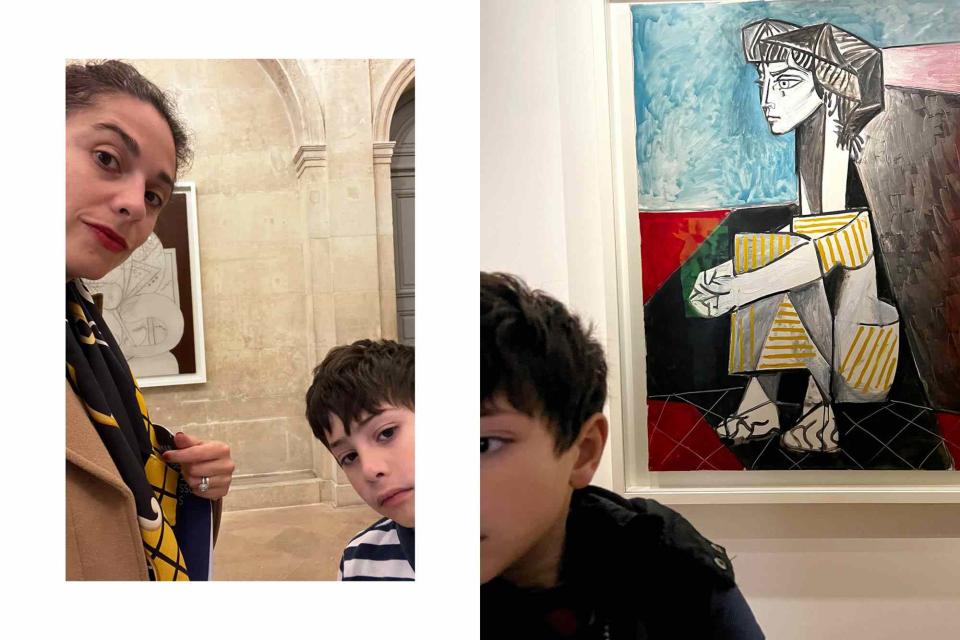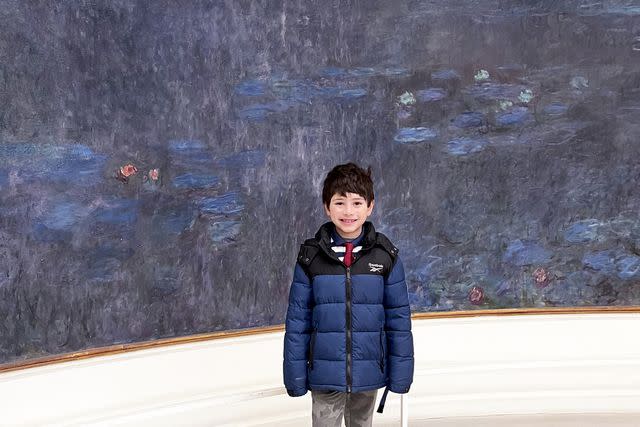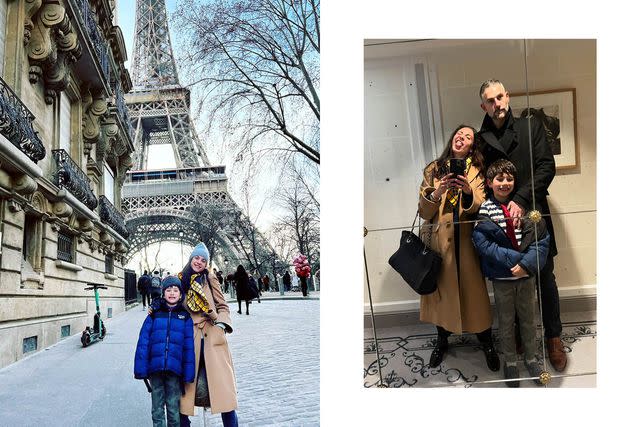How to Help Your Kids Actually Enjoy Museum-hopping in Europe, According to a Mom Who's Been There
With a little experience under my belt, I suggest following four simple rules, especially if you are keen to try the major attractions.

Jacqueline Gifford/Travel + Leisure
Don’t ask me how my seven-year-old son, Bobby, first learned about the "Mona Lisa." It could have been at home, reading one of my art books; in school during his famous artists class, where Leonardo da Vinci made an appearance; or frankly while going down some weird YouTube rabbit hole. But somehow, the Louvre’s iconic masterpiece had come into his consciousness — and last December, on our first visit to Paris together, I felt duty bound to get him up close. Crowds and all.
The Louvre, in fact, was booming: coming off the heels of COVID-19, 7.8 million visitors queued up by I.M. Pei’s famous pyramid in 2022, a 170% increase over 2021 (though attendance was still slightly down from 2019). Everyone had decided to visit Paris over the holidays: people were wandering en masse along the Rue de Rivoli and snaking by Notre Dame, even in its boarded up state. Still, I was determined to elbow my way into the big sites. Which led me to ask a very tiger mom question: how do you bring culture and art alive to a small child — someone more prone to tantrums, bouts of hunger, and jet lag? How do you leave a major European city like Paris feeling like you’ve delivered a teachable moment? With a little experience under my belt, I suggest following these four simple rules, especially if you are keen to try the major attractions.

Jacqueline Gifford/Travel + Leisure
Visit during off-peak hours.
Museums tend to be quiet upon opening, fill up mid-day, and then thin out toward the evening. For example, the gorgeous Musée Picasso-Paris, which is located in the Marais District, opens at 10:30 a.m. on weekdays. We purchased advance tickets for an 11 a.m. arrival and breezed right in, allowing us to get up close to some of the nearly 300 paintings on display. By the time we left, people were beginning to throng the major galleries — but our early bird slot had given us the inside track. Another tip: museums often have extended hours in the evenings, something we took advantage of during a summer 2022 trip to the Vatican.
Limit your time indoors to two hours or less.
We wanted to tackle the Musée D’Orsay and the Louvre: two of the big guns. These are vast entities with thousands of pieces in their collections. But when you accept the fact that you can’t see every nook and cranny, it actually becomes easier to limit yourself to a strict schedule — and keep the kids from burning out. “Two hours or less is paramount,” says Julia Pirrung, founder of Jet Set World Travel, a family travel specialist and a member of Travel + Leisure’s Advisory Board. “If you opt to visit without a guide, encourage research ahead of time so the kiddos can lead the charge with a map. The more engaged they are ahead of arrival — and the more ownership they have when inside — the more successful the experience.”
At the Louvre, we did have a guide thanks to Pierre Donel, the chief concierge at the Hôtel de Crillon, a Rosewood Hotel, who booked us a two-hour “Louvre Express” tour through Mon Petit Paris. It enabled us to enter at a specific time with 15 or so other travelers; go through a special group security entrance; and see the big three ("Mona Lisa," "Winged Victory," "Venus de Milo") with an English-speaking expert, who also shared details on the museum’s history as a medieval fortress and eventual palace. We saved the "Mona Lisa" for last, with my husband Rob hoisting Bobby up on his shoulders so he could get a better look at her smile.

Jacqueline Gifford/Travel + Leisure
Embrace the unexpected and smaller guys.
A good concierge or local expert will also give places off the typical tourist track that are worth visiting. “Paris has great museums specially dedicated to children, such as the Musée Grévin (Wax museum), City des Sciences, Grande Galerie de l'Evolution, Galérie de Paléontologie, and Musée de l'Illusion,” says Donel. Though one would argue the Musée de l’Orangerie is well-trodden territory, it became one of Bobby’s favorite stops because of its accessibility and scale; you could see Monet’s "Water Lilies," as well as key Impressionist works by Renoir and Matisse, in under 30 minutes.
Make it interactive...and save time for the gift shop.
Both Donel and Pirrung suggest adding a scavenger hunt component to make it more playful and dynamic. “Kids can locate treasures and solve riddles,” adds Pirrung, who did this during a guided visit with her two children at the Louvre. We did something more low-fi, but still fun: we told Bobby to remember three favorite things about each Paris museum — then recount them over a meal. (Gross, but true: he still remembers to this day that Picasso collected nail and hair clippings.) And let’s face it, if a kid starts to whine, an easy way to quiet them is with a small toy. We flew home from Paris with some good souvenirs (Christmas ornaments, bookmarks, socks, even a Claude Monet doll) that make us smile each time we see them.
For more Travel & Leisure news, make sure to sign up for our newsletter!
Read the original article on Travel & Leisure.

